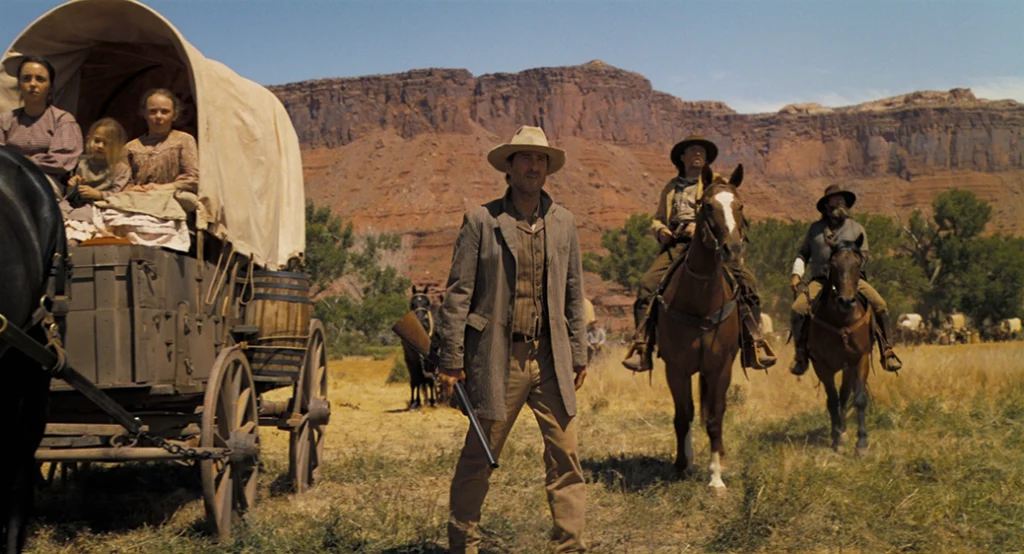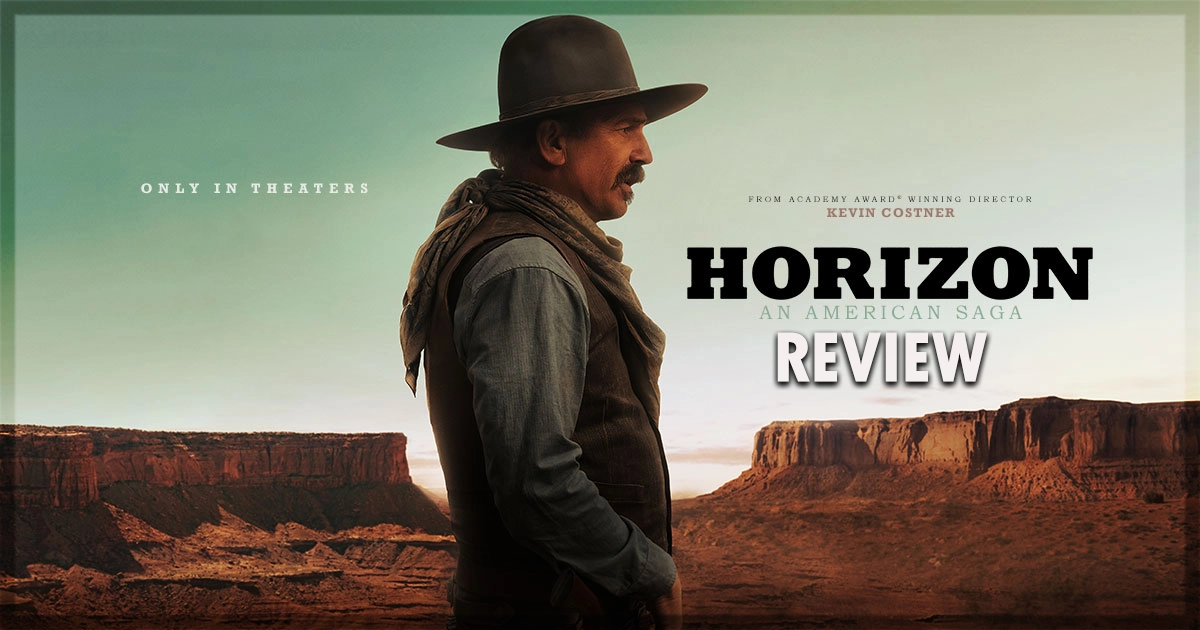There was one movie at this year’s Cannes Film Festival which was a passion project for the director that got all the attention: Megalopolis. But there was another movie, a passion project for the director, that also played Cannes, albeit not in competition: Horizon: An American Saga – Chapter 1. This is the first of a four-part series that Kevin Costner directed, co-wrote, co-produced, and stars in, with the second part releasing in August, and they are a grandiose attempt to sum up the entire history of the American West.
Considering that Mr. Costner’s Dances with Wolves not only revived the western as a genre back in 1990 but also changed how languages other than English were shown onscreen in Hollywood, it’s pretty exciting. It is also, in this current form, completely unfinished. There are so many plot strands being set up, and so many characters introduced that you sort of have to let it all wash over you (such as when Giovanni Ribisi, who is not seen in this film except in a montage during the credits, is included in the top billing). There is so much to digest here, it’s like admiring a table laid for Thanksgiving dinner, and if there was a complaint it would only be to say that it’s slightly overstuffed.
The story of Horizon: An American Saga

The titular Horizon is actually a town – well, land that is being sold off into parcels for the purpose of building a town. Flyers advertising the town are scattered throughout the country, which spans at least four states and some thousand miles. The land for Horizon is actually a river crossing used by the local Apaches, who slaughter the initial surveyors (and one’s small son) and leave the bodies to be buried by an itinerant preacher. The Civil War is happening elsewhere in the United States, and the whole world is on the move, though it’s clear the different strands of the plots will eventually converge on Horizon:
- A wagon train led by Matthew (Luke Wilson) is making its slow way west through hostile territory. It contains a family with several daughters who will clearly be important later on and a British couple who are the fancy-pants comic relief.
- An integrated settlement in Arizona is burned to the ground in a frightening night-time attack, the only survivors being Frances (Sienna Miller) and her 13-year-old daughter Lizzie (Georgia MacPhail), who were buried alive underground and rescued just in time.
- The rescuers are an Army regiment led by Houghton (Danny Huston), Riordan (Michael Rooker) and Trent (Sam Worthington), who are aghast at the hubris of the settlers in such hostile territory and unable to provide them protection.
- The similarities with The Damned, also about an army regiment in the West during the Civil War and which also played at Cannes, start and end there, not least because that entire film feels like it was made for a week’s worth of this one’s catering budget.
- In the Apache settlement up in the mountains, there is tension between the young warriors, led by Pionsenay (Owen Crow Shoe) and the tribal elders, such as Taklishim (Tatanka Means), over how best to cope with the invaders.
- In Montana, a woman (Jena Malone) violently kidnaps her own child, leading to a years-long manhunt by Junior (Jon Beavers, who strides around with an entire wolf pelt over his shoulders, a very arresting look), and Caleb (Jamie Campbell Bower, playing to type).
- When Caleb and Junior discover the woman in Wyoming, her child is in the care of painted lady Marigold (Abbey Lee), who had managed to attract the attention of a potential gentleman caller, Hayes (Costner himself).
Obviously, a gentleman such as Hayes will not leave a nice lady like Marigold to fend for herself. His choice to get himself involved with her problems is what kicks the plot into motion after easily 90 minutes of set-up. In other reviews, laying out the plot like that would feel like a spoiler, and that amount of set-up would be waaaaaaaay too much, but there’s so much going on here that it really is only setting the table.
Horizon: An American Saga is riveting and handled with panache
The thing is that it’s all completely riveting and all handled with a panache that’s unusual even in epics of this scale. While Megalopolis only felt like it was trying too hard, here there’s a sense that all of this excellence has been casually put together, that this is only the appetizers for the main action to come. J. Michael Muro’s cinematography is crisp and bright, making everything, especially night-time fires, look absolutely wonderful. Miklos Wright’s editing keeps things moving at a very brisk pace; despite the enormous quantities of plot the three-hour runtime isn’t really felt. The production design by Derek R. Hill has an excellent eye for quilts and other homemade attempts at beauty in these circumstances.
Ms. Miller and Mr. Worthington, quietly underappreciated actors, were both the leads of this ‘chapter.’ As a woman thrilled to still be alive despite huge personal loss and as a man astonished by his helplessness despite his authority, they are more relaxed, separately and together, than we are used to seeing them. Mr. Wilson’s harassed man out of his depth is manfully doing his best, whilst needing to manipulate a strange group of people much more than he’d ever thought necessary. The scenes with the indigenous actors are handled in exactly the same style and with the same level of respect as that of the colonizers, and it’s still somewhat shocking to see a Western refuse to differentiate between hero and villain in that way.
But Mr. Costner’s respect for the West and all the people therein has been the cornerstone of his career, whether in his minor early roles in silliness like Silverado or in his more recent ponderous television work on Yellowstone. It all means Horizon: An American Saga – Chapter 2 is now one of the summer’s most anticipated movies.


